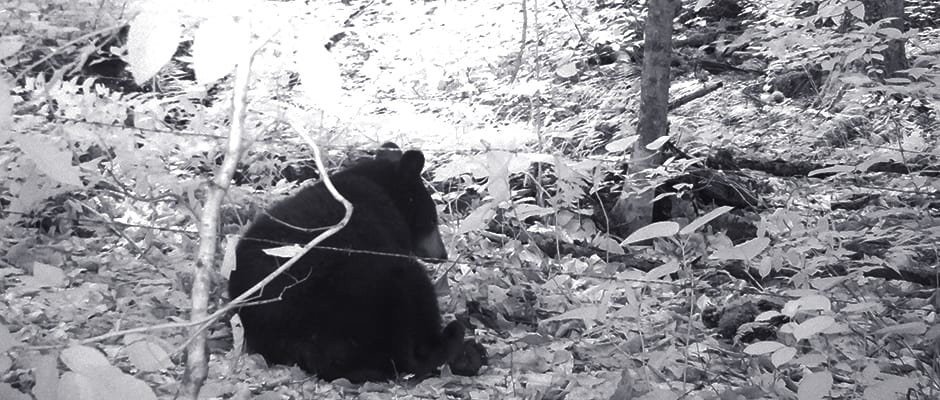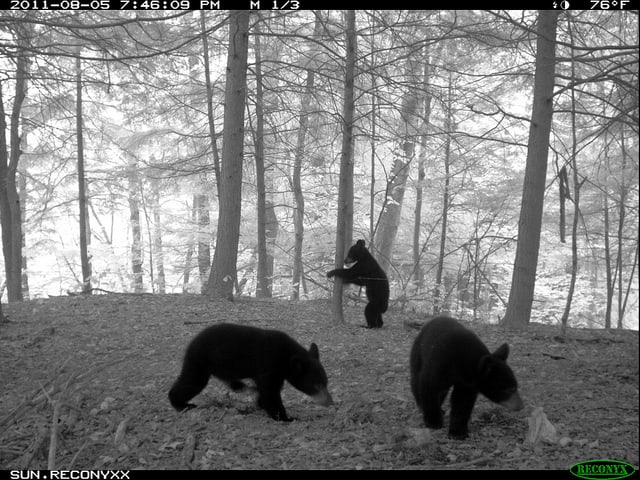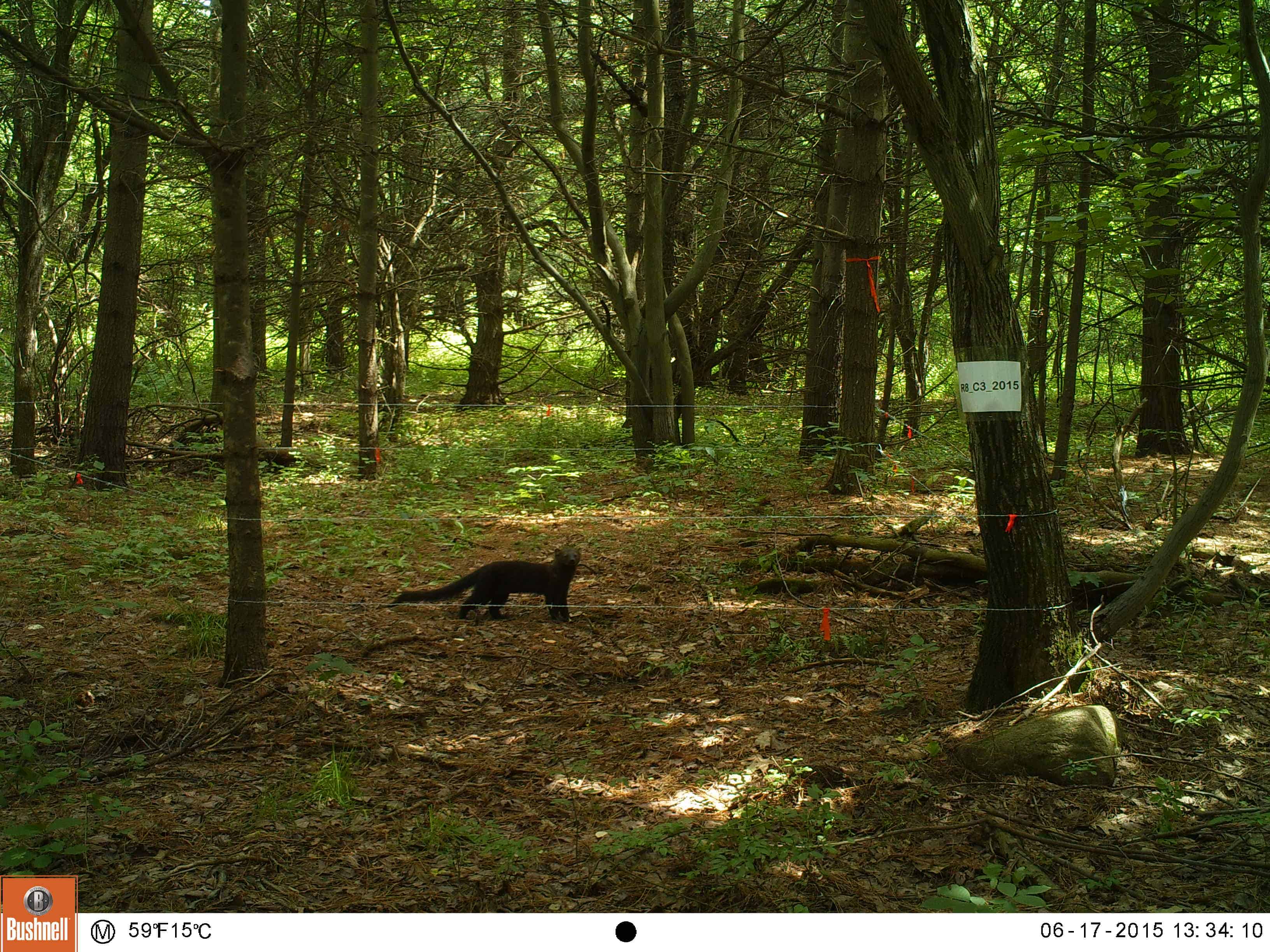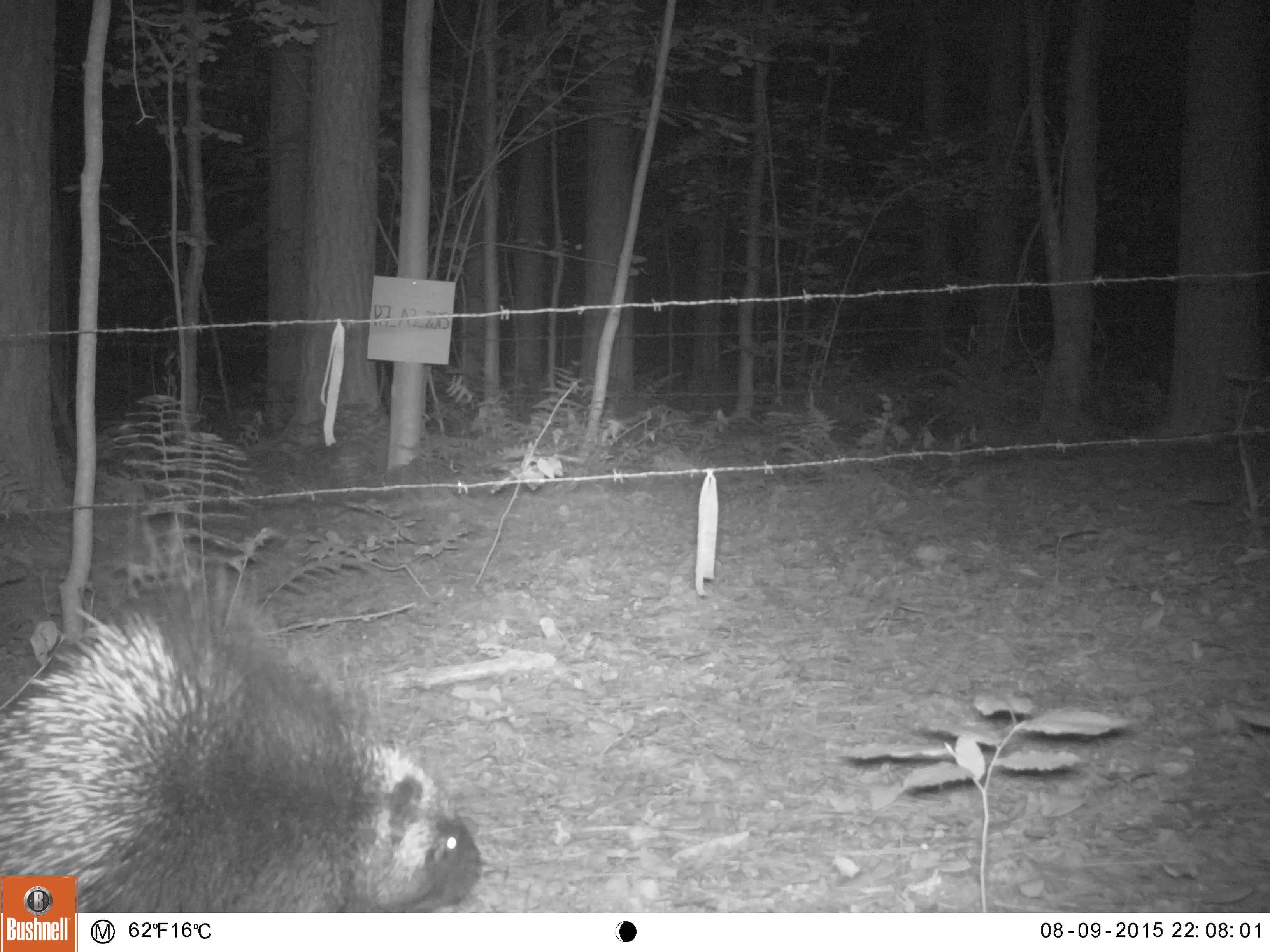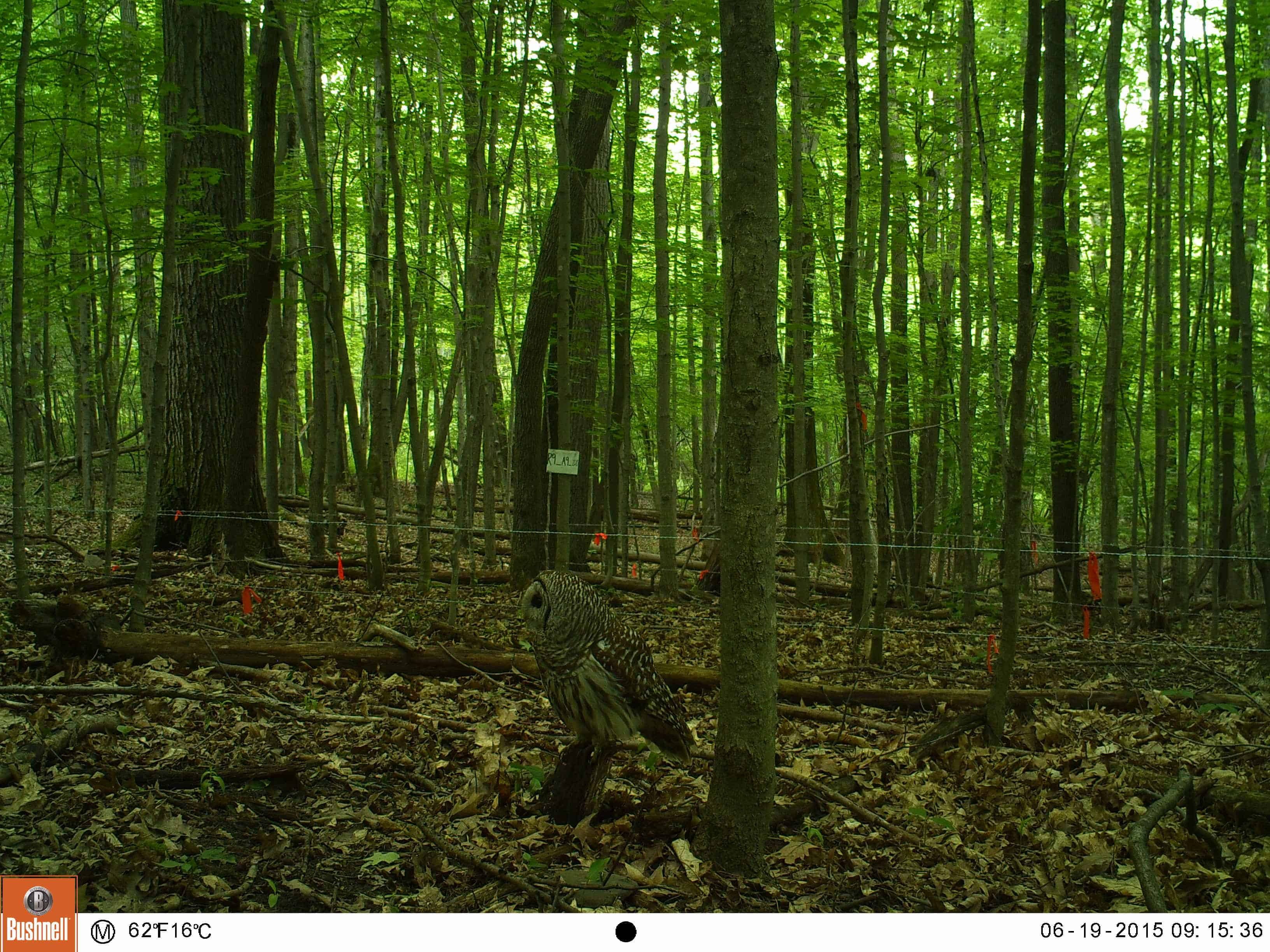Share this article
Wild Cam: TWS Member Tracks Upstate New York Black Bears
Apparently undeterred by real estate prices in upstate New York, black bears are expanding throughout the region. Although the increase in populations has been occurring since the early 1900s, it has been particularly apparent since the 1990s. Catherine Sun, a graduate student at Cornell University and a member of The Wildlife Society, decided to learn more about the population increase and, in the process, help the New York State Department of Environmental Conservation (NYSDEC) update its current bear management plan.
“We know that management in the state has been successful in protecting bears,” Sun said. “Some agriculture and farmlands have reverted back to forests, so there’s more traditional habitat available for bears, too.”
The latest Wild Cam series features research collected from 90 cameras that Sun and individuals with NYSDEC placed in upstate New York this past summer. Sun began this research as part of her master’s degree and continues to work on it as part of her doctoral research.
Two black bears scout out meat and pastries that Sun placed in the ground to draw the bears to a barbed wire hair snare site. In the background, a cub investigates a tree where Sun applied skunk paste, a lure with a strong scent normally used in hunting. According to Sun, bear numbers might be growing in upstate New York not only because of an increase in forest areas that serve as habitat but also because bears are generally adaptable. In addition, “It might have something to do with strong bear populations in neighboring states like Pennsylvania and New Jersey,” she said. “It might be a part of a larger scale trend as well.”
A camera catches a black bear and sow by surprise as they stand by a barbed wire hair snare. Using DNA from hair caught in these barbed wires, Sun determined which bears visited particular sites, which helped estimate population size. She will also fit a handful of bears with GPS collars to collect GPS coordinates in order to study how the bears use their habitat.
While Sun’s project focused on black bears, it also caught other wildlife on camera. Here, in the early hours of the morning, a raccoon does its best to reach for a rag soaked in liquid smoke that was tied five feet up and knotted to a tree branch. “It was reaching with so much effort, but it was never going to get that rag,” Sun said. The scent from the rag was used to lure black bears to a barbed wire hair snare site.
The cameras also detected other species of wildlife such as this fisher that visited a barbed wire hair snare site.
This porcupine’s photo — one of many porcupine detections that occurred late at night — was taken while it was visiting a black bear research site.
This barred owl sitting on a tree stump on the ground was a “rare treat to see” since barred owls are mainly active at night and roost in trees during the day, Sun said.
This bear appears to enjoy the simple bare necessities of life as it rubs itself against a tree at a barbed wire hair snare site, likely drawn to the scent of the skunk paste that Sun applied to the tree. Sun hopes to continue to collect information on the bears to provide rigorous baseline estimates for their population size and to understand how their ecology attributes to range expansion and population growth. “This is a large area we’re trying to study,” she said. “Different methods collect and address patterns at different scales. You have to piece everything together to get a comprehensive picture of what’s going on.”
This photo essay is part of an ongoing series from The Wildlife Society featuring photos and video images of wildlife taken with camera traps. Check out other entries in the series here. If you’re working on an interesting camera trap research project and have photos you’d like to share, email Dana at dkobilinsky@wildlife.org.
Header Image: Camera trap image taken of a black bear in upstate New York.
Image Credit: Catherine Sun and New York State Department of Environmental Conservation



